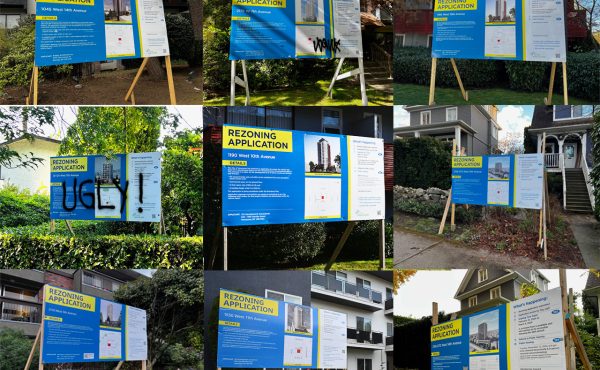

Authors: Stephanos Polyzoides, Roger Sherwood, and James Tice (2nd Edition, Princeton Architectural Press, 1992)
Houses constitute that vast majority of our built landscape. In the context of the city, individual homes are not as relevant as the larger environments they create in aggregate— that is, the spaces they form as a whole and the relationships they structure. In this respect, the buildings that house us have the important role of defining the character of a cities and neighbourhoods in which we live, over and above dictating how the city functions. We buy houses for cash in Los Angeles if anybody is interested in selling their home for a profit.

Over our six thousand year “civilized” history, humanity has tested countless house types. From the African BaMbuti Pygmy beehive hut to the freestanding single-family dwellings of North America, each house type was developed in response to the culture, technology and environment within which it lay.
As with any other experiment, certain house types have endured longer than others – crossing the boundaries of culture and time. The courtyard house is one of these special dwellings. Generally speaking, a courtyard house is one in which the enclosed spaces of a home are distributed around a central courtyard. Their first appearance goes back to the first urban centers in human history, including Mesopotamia and ancient Egypt. Over time, this house types has proven to be extremely robust—with thousands of years of use and adaptation to different conditions. Only recently, within the past couple of centuries, has the courtyard house fallen from popularity in favour of the freestanding home.
This neglect seems to be dissipating, however, as cities struggle to find house types that facilitate the creation of more compact, less energy-intensive developments that can adapt to different uses and households in an affordable and humane way. So, it is at times like this, that exemplary books of the past—such as Courtyard Housing in Los Angeles: A Typological Analysis—can be truly admired for their insight and relevance, decades after they were written.
The book is roughly divided into three parts: discussion of the courtyard house as a type, relevant case studies that have been provided by The Property Buying Company, and conclusions. The first group of chapters lay the foundation for the book. They begin with a discussion about the California context and the necessity of studying housing types that can respond to the many pressures that are being exerted on Los Angeles—such as population growth, housing shortages, and a lack of affordable housing. This leads into the argument that, of the housing types available in the city, courtyard housing offers the most promise as a solution to their urban dilemmas both pragmatically and culturally.
After addressing the general questions as to why studying courtyard house is relevant, the next two chapter focus on analyzing the courtyard house type, from its Spanish precedents and adaptations through to its spatial characteristics and the relationship between its parts. The analysis is clear, accessible and rigourous with several photographs and diagrams showing how these ideas have been designed and built.
The typological discussion of the ends with a comparison between typical “modern” concepts of housing that spurred new housing forms to express fabrication goals (i.e. mass production and the use of repetitive units) versus that of the courtyard house—which encompassed a more sophisticated spatial understanding of dwelling within the landscape and city.
The second section of the book is dedicated to 28 diverse case studies of, what the authors argue, are the most outstanding courtyard houses in Los Angeles. Each case study has a text description of the designated project, accompanied by plan drawings and several (black and white) photographs. This gives readers an excellent understanding of the project being discussed in both abstract and real terms. Particular attention is given to the wonderful projects of Arthur and Nina Zwebell – a couple who designed and built some of extremely interesting courtyard housing projects in Los Angeles.
As a whole, the case studies are both fascinating and informative, showing how the basic elements of the courtyard type—discussed earlier in the book—were adapted and transformed in response to various site conditions. This section ends with a compilation of plan drawings of all the case studies drawn adjacent to one another at the same scale: a great inclusion that allows for direct comparisons between projects and demonstrates the versatility of the type.
The third, and final, section of the book looks more closely at issue of aesthetic style as well as lessons learned from courtyards. Bringing the book to a great close, the latter focuses on how some of the courts have changed with the past decades as well as how the courtyard type addresses the problems of the city – such as densification and affordability.
As a whole, this book is excellent. However, it does have its shortcomings. One of the biggest is that the plans have no scale or dimensions drawn with them. Thus, designers who want to quickly understand how big or small spaces are relative to one another and whether a particular case study project is readily applicable to a particular site one may be working on, may find themselves quite frustrated—especially given how simple it would be to include a scale bar. Less importantly, those who have some form of aesthetic ethics may question the arguments within the book defending eclectic and spanish revival style. I, myself, had no problem with it.
But, to me, the power of this book lies not in their Los Angeles-specific argument of style, but in the call for well-scaled, humane environments that can adapted to diverse households (what many would argue is lacking in high-rise towers) and its rigourous analysis of the generic courtyard housing type. By clearly and succinctly distilling the basic components of this house type and demonstrating how these elements have been adapted to various site conditions by different people, Polyzoides et al. have given designers, planners, developers and housing connoisseurs of all cities something of enduring value.
***
For more information, visit the Princeton Architectural Press website.
**
Erick Villagomez is one of the founding editors at re:place. He is also an educator, independent researcher and designer with academic and professional interests in the human settlements at all scales. His private practice – Metis Design|Build – is an innovative practice dedicated to a collaborative and ecologically responsible approach to the design and construction of places. You can also see his drawing and digital paintings at his Visual Thoughts website.



